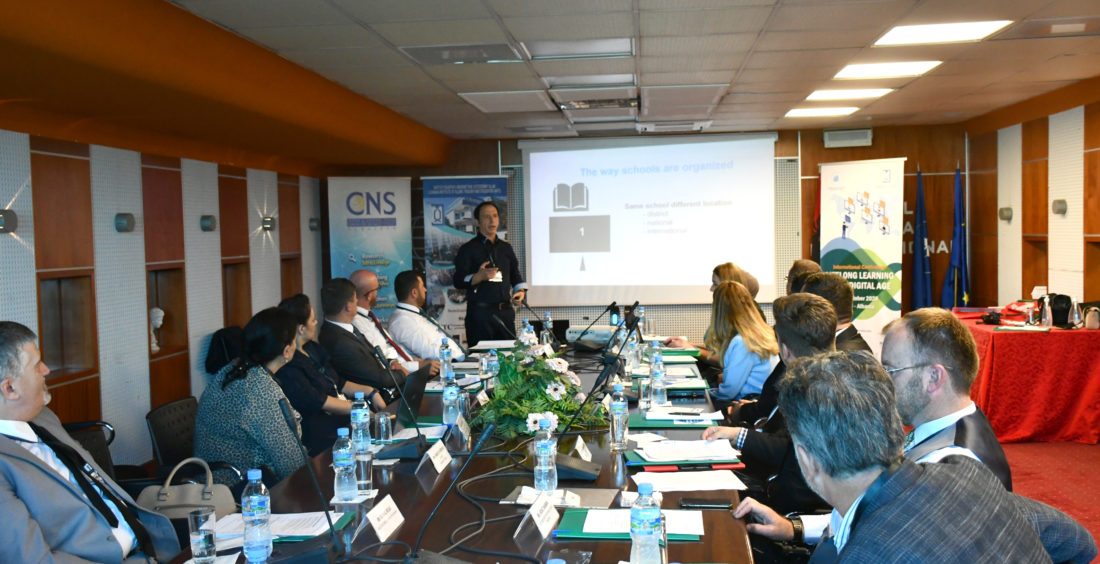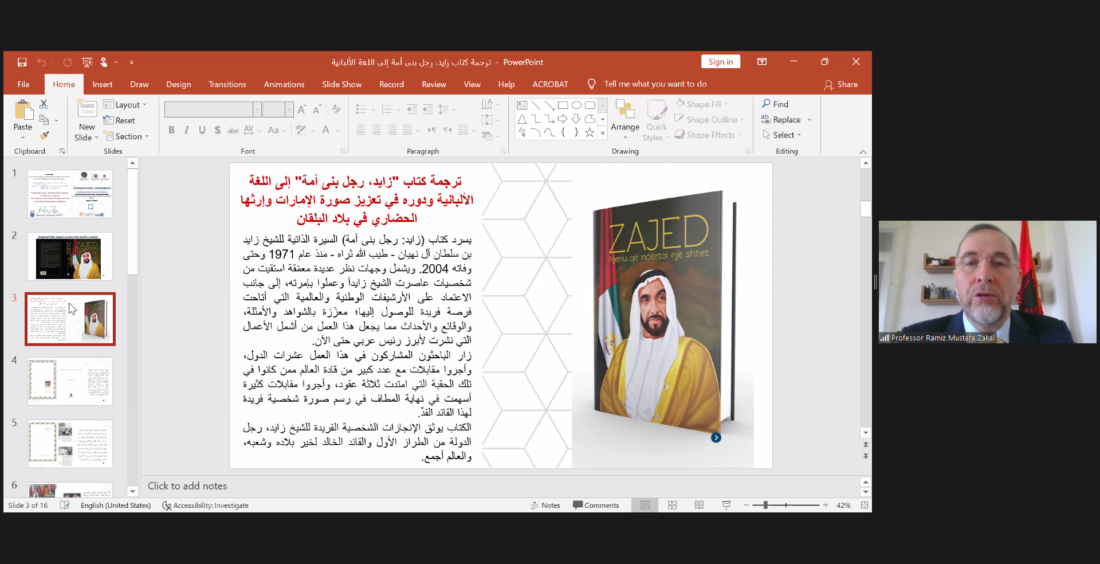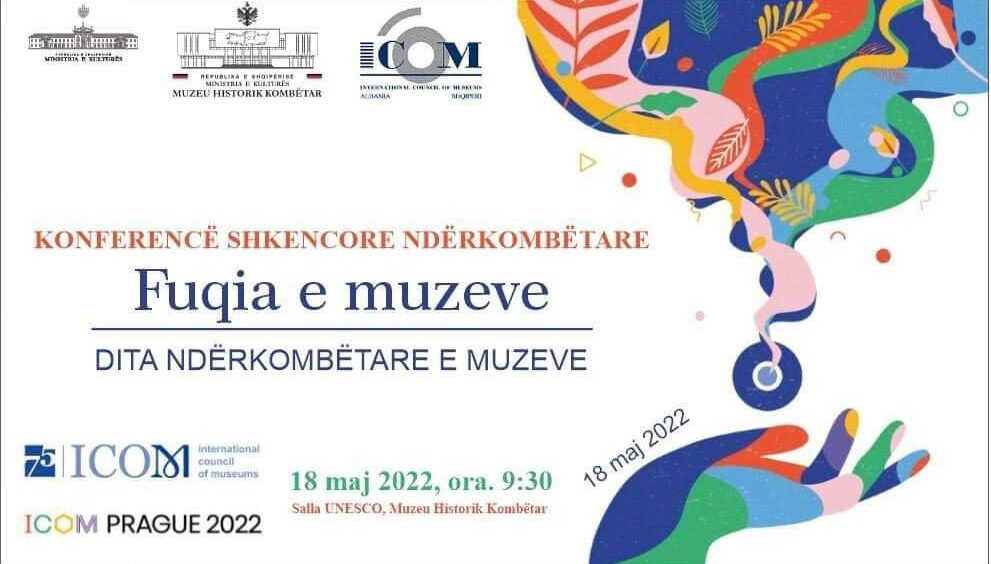...
Lifelong learning as a strategy to ensure social integration and continuous personal development On October 3-4, 2020, the International Conference on “Lifelong Learning in the Digital Age” was held in Vlora, which aimed to encourage lifelong learning and use the potential of digital technologies. The participants came from various scientific fields and disciplines, research-scientific institutions, state and private, education providers, institutions of Islamic religious communities, community leaders, teachers and preachers from Albania, Kosovo, Bosnia-Herzegovina, USA, North Macedonia, Montenegro and Presheva. This conference...
IETT participated in the 2nd International Conference on Translation organized by the National Library and Archives of Abu Dhabi in the United Arab Emirates with the theme: “Translation of the book Zayed, the man who built a state” in the Albanian language and its role in improving the image of the United Arab Emirates and its cultural heritage in the Balkans”. The conference was organized virtually and a number of academicians and researchers from leading universities and institutions from around the...
On May 18 2022, the National Historical Museum of Albania organized the international scientific conference on the theme “The power of museums”, with the participation of represantives of cultural institutions and various researchers. The director of the National Historical Museum of Albania, Dorian Koçi, during the opening speech of the conference, emphasized that today should serve to increase awareness of the fact that today should serve to increase aeareness of the fact that museums are an important means of cultural exchange,...
The history of photography in Albania begins with the Italian photographer Pietro Marubbi, who settled in the city of Shkodra during the second half of the nineteenth century and opened the first photography studio there in 1858. The Marubi, the National Photography Museum and Albania’s first photography museum, opened in May 2016. The core of its collection is comprised of what was formerly the contents of the Marubi Photothèque. Having no children of his own, Pietro Marubbi’s first assistants and...
The National Historical Museum is the largest museum in Albania and one of the most important. The National Historical Museum was inaugurated on October 28, 1981. It is the most important museum institution in Albania. The National Historical Museum aims to promote the understanding and appreciation of the history of Albania to the local, national and international public. The building of the National Historical Museum occupies a total area of 27,000 m2. It has a dominant facade, thanks to the...
The ancient city of Phoenicia received the status of National Archaeological Park in 2005. Phoenicia has an ancient history, which was the capital of the Kaons, while in the 3rd century it became the capital of the entire state of Epirus. According to Polybius, it was the most fortified city of Epirus. It stood on a hill in the shape of an overturned ship. The Archaeological Park of Phoenicia is located on a hill 283 m above sea level, 9 km...
The Iconographic Museum “Onufri” is in the center of the inhabited neighborhood of the Berat fortress. It is adapted to the areas of the Cathedral “Sleeping Saint Mary”. The church where the “Onufri” iconographic museum is located is the largest church in the Kala neighborhood. It was the Cathedral of the City of Berat and together with the buildings of the Metropolis formed an architectural complex. From this complex, only the church has remained, which was built in 1797, but is thought...
It is the largest in the Balkans, with an area of 360-540 km2, and together with the Moraça, Drini and Buna Rivers represents a unique system with high natural, biological and hydrological potentials. The lake is 45 km long and 13 km wide and collects water from the watershed of about 5,179 km2. The average depth is 7-10m, while the maximum is 44m. From this lake originates Buna, which flows into the Adriatic. Once, the lake stretched to the foot of the...
One of the most attractive and fascinating territories of the Albanian lands, with many natural beauties and great tourist assets, are the Albanian Alps. They constitute the most mountainous and interesting region of our country and rank us among the few European countries with Alps. Most of Albania’s peaks above 2,000m above sea level are located here, the highest peak of the Alps, Jezerca (2,694m), the second after the peak of Korab (2,751m). The relief has the shape of a large...













 Rruga e Elbasanit, Pallati nr. 111,
Rruga e Elbasanit, Pallati nr. 111,